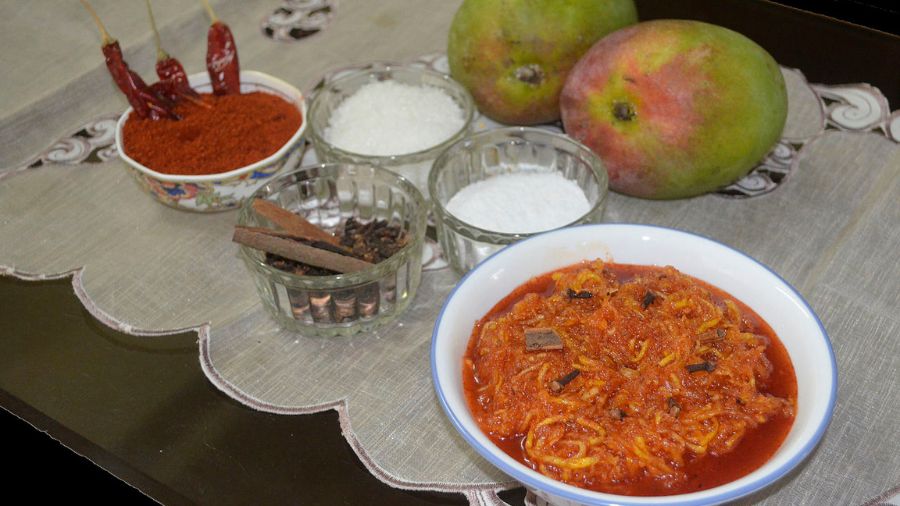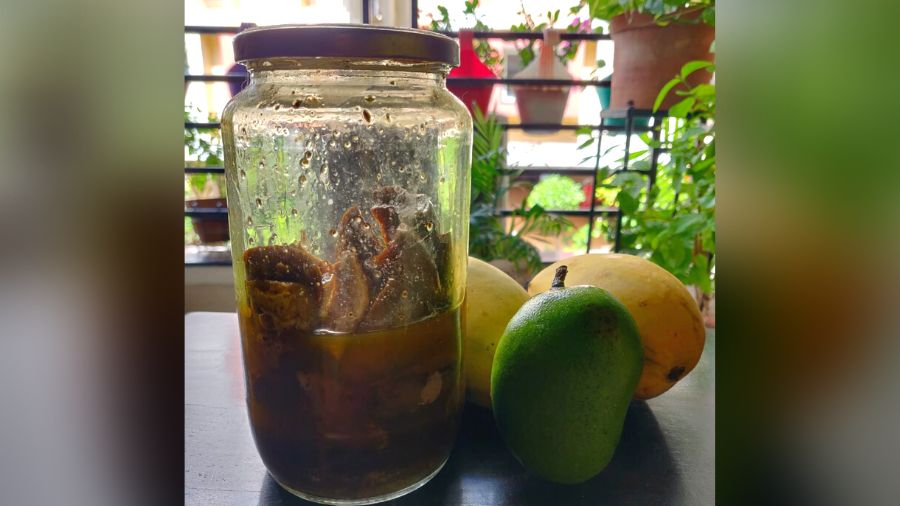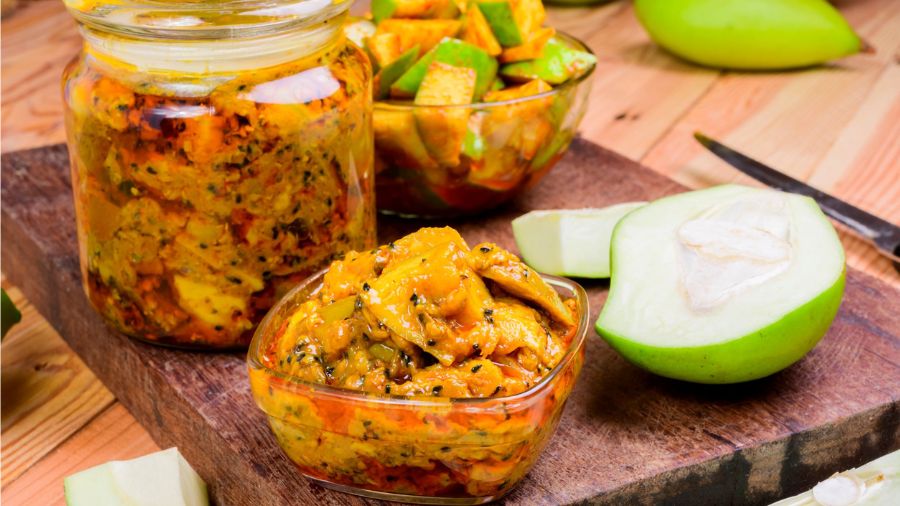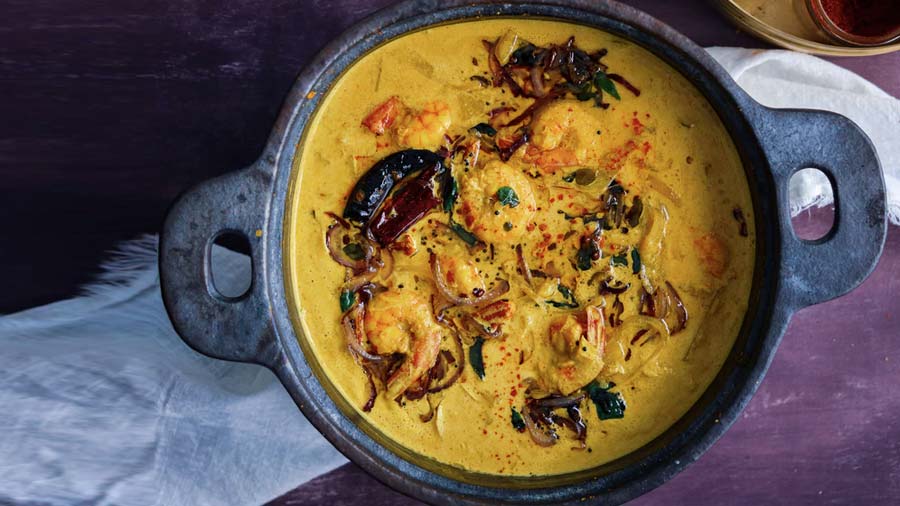It's mid-July, and about the time we bid adieu to the king of fruits. Though some mango varieties can be found till August, yet, as the monsoon sets in, it’s time to say goodbye to mangoes for the rest of the year.
However, to savour the taste of this beloved fruit year-round, there are traditional recipes throughout the country that ensure that mangoes stay with us year until the next season. These recipes have been around for generations, and almost every household has such a mango recipe passed down to them.
For obvious reasons, many of these recipes fall into the preserves category — jams, pickles, etc. In the Bengali kitchen, the dish that tops this chart is aamer achar or mango pickle. There’s a plethora of pickles that are made every season, but aam tel seems to be the king here. It is made with raw mangoes that are sun-dried and processed with mustard oil and spices before marinating in the sun. Aam tel is so close to the heart of Bengalis, that it finds a place in almost every meal, from a side with dal and aloo chokha at lunch to a dressing for muri for an evening snack. In fact, most Bengali households have those typical ceramic containers or boyams — often passed on from an older family member — to store aam tel, aam kasundi, mishti aamer achar, and other pickles and preserves to relish throughout the year.
Next on the list is the aamshotto. ‘Aamshotto doodhe pheli tahate kodoli doli’ — this popular line penned by Rabindranath Tagore speaks about his affinity for sweet-tart ‘fruit leather’. In rural Bengal, aamshotto is traditionally made by drying out a concoction of mango pulp on cane mats (madur) placed in the sun. The Bengali aamshotto tends to be slightly more tart and darker in colour than its other Indian counterparts such as aam papad or ambavadi. Like them, it can be stored for a long time and you can enjoy a tiny bite of mango even in December.
Also on the recipes list is the aam korar mishti achar, a sweet and spiced jammy preserve that’s made with raw mangoes, jaggery and spices. This one too has cousins around the country like the Maharashtrian kairi ani kothimbirchi tikhat jam (mango-coriander spicy jam) and the Gujarati chhunda or chhundo, which are all perfect accompaniments to parathas, theplas and even chaat.

Gujarati chhundo Wikimedia Commons
There’s no recipe book in Bengal without recipes for mangoes. If you want to try your hand at some of these recipes, here are three from the cookbook of the well-known Leela Majumdar:
Aam korar mishti aachar
Ingredients:
- 6 large raw mangoes
- 250 gm sugarcane jaggery (gur)
- Salt to taste
- 1 tsp turmeric powder
- 3 tsp powdered paanch phoron
- 1 tsp red chilli powder
- ½ cup (small) mustard oil
Peel and shred/grate the mangoes before mixing with salt and turmeric to prevent it from turning black. Dry the mango mix in the sun for about four days before adding in the red chilli powder and gallery and leaving it out to sun-dry for another day. Lastly, add the mustard oil and powdered paanch phoron, mix well and store it in a container. Leave the container in the sun periodically.
Aamshotto
Ingredients:
- Ripe mango pulp
- Some jaggery and salt is the mango is tart
Blitz the mangoes to make a mango pulp concoction, the consistency should neither be very loose or very thick. On a stone plate or on bamboo sheets, pour and spread a fine layer of the pulpy mix. If kept under a scorching sun, it shouldn’t take more than two hours to dry. Keep pouring and adding layers and drying in the sun until sundown. Repeat the process the next day. Once the aamshotto is sun-dried, wrap it in a cloth and store it in a dry place. You can lightly rub some mustard oil on the surface to eliminate chances of mould or fungus.

Aam tel
Aam tel
Ingredients:
- 20 medium size pieces of raw mango
- 500gm mustard oil
- 4 tsp mustard powder
- 4 tsp dry roasted cumin powder
- 4 tsp red chilli powder
- 4 tsp turmeric powder
Dice the mango, mix with salt and turmeric and dry in the sun for four days. Mix together the mangoes and all other ingredients in a bowl before pouring it in a container and drying in the sun for about a month. Remember to put the aam tel out in the sun often to increase shelf life.


